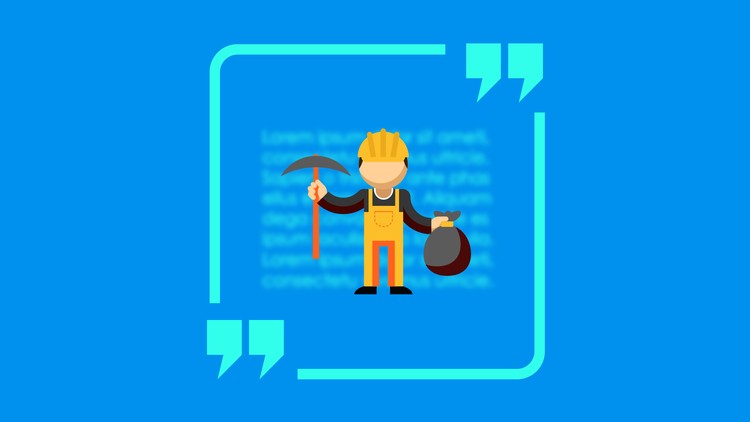
Hands-on text mining and natural language processing (NLP) training for data science applications in R
What you will learn
Students will be able to read in data from different sources- including databases
Basic webscraping- extracting text and tabular data from HTML pages
Social media mining from Facebook and Twitter
Extract information relating to tweets and posts
Analyze text data for emotions
Carry out Sentiment analysis
Implement natural language processing (NLP) on different types of text data
Description
Do You Want to Gain an Edge by Gleaning Novel Insights from Social Media?
Do You Want to Harness the Power of Unstructured Text and Social Media to Predict Trends?
Over the past decade there has been an explosion in social media sites and now sites like Facebook and Twitter are used for everything from sharing information to distributing news. Social media both captures and sets trends. Mining unstructured text data and social media is the latest frontier of machine learning and data science.
LEARN FROM AN EXPERT DATA SCIENTIST WITH +5 YEARS OF EXPERIENCE:
My name is Minerva Singh and I am an Oxford University MPhil (Geography and Environment) graduate. I recently finished a PhD at Cambridge University (Tropical Ecology and Conservation). I have several years of experience in analyzing real-life data from different sources using data science-related techniques and producing publications for international peer-reviewed journals. Unlike other courses out there, which focus on theory and outdated methods, this course will teach you practical techniques to harness the power of both text data and social media to build powerful predictive models. We will cover web-scraping, text mining and natural language processing along with mining social media sites like Twitter and Facebook for text data. Additionally, you will learn to apply both exploratory data analysis and machine learning techniques to gain actionable insights from text and social media data.
TAKE YOUR DATA SCIENCE CAREER TO THE NEXT LEVEL
BECOME AN EXPERT IN TEXT MINING & NATURAL LANGUAGE PROCESSING :
My course will help you implement the methods using real data obtained from different sources. Many courses use made-up data that does not empower students to implement R based data science in real life. After taking this course, you’ll easily use packages like the caret, dplyr to work with real data in R. You will also learn to use the common social media mining and natural language processing packages to extract insights from text data. I will even introduce you to some very important practical case studies – such as identifying important words in a text and predicting movie sentiments based on textual reviews. You will also extract tweets pertaining to trending topics analyze their underlying sentiments and identify topics with Latent Dirichlet allocation. With this Powerful course, you’ll know it all: extracting text data from websites, extracting data from social media sites and carrying out analysis of these using visualization, stats, machine learning, and deep learning!
Start analyzing data for your own projects, whatever your skill level and Impress your potential employers with actual examples of your data science projects.
HERE IS WHAT YOU WILL GET:
- Data Structures and Reading in R, including CSV, Excel, JSON, HTML data.
- Web-Scraping using R
- Extracting text data from Twitter and Facebook using APIs
- Extract and clean data from the FourSquare app
- Exploratory data analysis of textual data
- Common Natural Language Processing techniques such as sentiment analysis and topic modelling
- Implement machine learning techniques such as clustering, regression and classification on textual data
- Network analysis
Plus you will apply your newly gained skills and complete a practical text analysis assignment
We will spend some time dealing with some of the theoretical concepts. However, the majority of the course will focus on implementing different techniques on real data and interpreting the results.
After each video, you will learn a new concept or technique which you may apply to your own projects.
All the data and code used in the course has been made available free of charge and you can use it as you like. You will also have access to additional lectures that are added in the future for FREE.
JOIN THE COURSE NOW!
Content